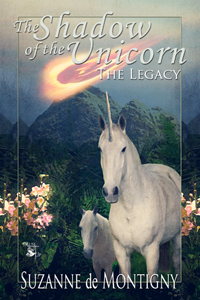In case you missed it while busy at your Memorial Day barbecue, I had my first post up at the Enchanted Inkpot, discussing female heroines and naming trends. Today K.L. Pickett, author of Seventh Grade (Alien!) Hero and the upcoming Maybe It’s Magic! is guesting on the blog today. Welcome, K.L.!
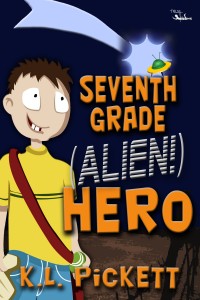 Science Fiction vs. Nonfiction
Science Fiction vs. Nonfiction
Science fiction is a passion of mine. That’s why I wrote the middle-grade novel SEVENTH GRADE (ALIEN!) HERO. Science fiction fills a yearning inside of me, a longing to create a world based on what we as human beings know, but goes beyond that knowing. Science fiction takes us a step closer to what might be, as opposed to what is.
On any given evening, you’ll most likely find me reading a good science fiction novel. My husband, on the other hand, would be engrossed in a nonfiction book. “Why read about imaginary things,” he asks, “when the real world is so interesting?”
Yes, the real world is interesting. But getting involved with intriguing characters and their wants and needs – in other words, connecting with them – is the most important part of any writing, be it science fiction or other genres. The main character of SEVENTH GRADE (ALIEN!) HERO is a middle-grade student that kids can relate to. Dustin’s a normal seventh grade boy whose life has been turned upside-down. His parents have gotten a divorce, his dad’s remarried, and his mom has moved her and him out to the middle of the desert, away from the suburban life he’s always known. He has no friends. Middle-graders can understand him because they all know how hard making friends can be, even if they haven’t moved to a new home themselves.
Besides great characters, there has to be a captivating plot. Being compelled to turn the page to find out what happens next – that just doesn’t happen to me when I read nonfiction. Don’t get me wrong, I love learning new information, but I’ve never stayed up half the night because I couldn’t put a nonfiction book down. Yet there have been many, many mornings when I’ve gotten up groggy from lack of sleep, because I just had to finish a great science fiction story.
That was my goal when I wrote SEVENTH GRADE (ALIEN!) HERO. Dustin encounters one problem after another, each more urgent than the one before. I wanted to create a story that a reader wouldn’t want to put down until he or she had read the last page.
Like all good science fiction, the story involves technology. Dustin and the alien character, Bok, communicate by means of a holographic image. Now I’m sure reading about holographic images – how they are produced, who designed the first ones, how they are used – would be informative and interesting. However, I’d never lose sleep reading about them.
Both science fiction and nonfiction can be full of adventure. Reading about a dangerous and exhilarating trek to the top of Mt. Everest or to the bottom of the sea floor can be stimulating and informative. However, I’m never sitting on the edge of my seat while reading a nonfiction book.
I’ve never ‘lost’ myself in a nonfiction book, the way I do when I’m reading a good fictional story. Becoming totally immersed in a novel is a pleasure I’ve never had with a nonfiction book. My hope is that readers of SEVENTH GRADE (ALIEN!) HERO will become absorbed with the story and ‘lose’ themselves in it.
Many people, like my husband, may prefer nonfiction over science fiction. But for me, there’s nothing better than a compelling science fiction story, with great believable characters, an interesting setting, driven by an action-packed plot. Reading a great science fiction story is something worth losing sleep over.
Seventh Grade (Alien!) Hero Blurb:
Seventh-grader Dustin Cotter dreams of being the first human to make contact with an alien species. After watching a meteorite crash-land on Earth, he discovers it’s a miniature spaceship and becomes determined to catch it.
But first a dog grabs it. A dog that happens to be owned by Randie, the cutest girl at his new school. Then it’s stolen by another kid on horseback: Max, the school comedian/magician/cowboy.
And making matters worse, a dangerous motorcyclist saw the meteorite crash, too. Now he wants it and will stop at nothing until it’s in his possession. One dark night, he catches Dustin alone out in the desert – and Dustin’s dream turns into a life-threatening nightmare.
K.L. Pickett was born in Southern California. Her first job as a young teenager was collecting eggs on an egg ranch. She’s had many occupations since then: preschool teacher, real estate salesperson, special education teacher’s assistant, loan officer, furniture salesperson, and agricultural biologist. She currently teaches fourth grade in a tiny rural elementary school.
Over fifty of her stories and articles have appeared in national magazines such as Boys’ Life, Highlights for Children, Humpty Dumpty, and Ladybug under the name Karen Troncale.
She’s rescued dozens of cats, dogs, and birds in her life including a pelican, a pheasant, and several crows. An avid animal-lover, she’s a volunteer for the Tombstone Small Animal Shelter, designing their flyers each week and writing their public radio announcements.
Currently she resides in Tombstone, Arizona, along with her husband, dog, and mule. When she’s not writing, reading, or teaching, she’s riding her mule along the same desert trails that Wyatt Earp and Doc Holliday rode upon.
SEVENTH GRADE (ALIEN!) HERO is her first book. It is available at the MuseItUp bookstore, Amazon, Barnes & Noble, and other ebook retailers. MAYBE IT’S MAGIC!, her second book, releases in August 2013.
Please visit her website: www.klpickett.weebly.com. Every month she features a free children’s short story to read and an inexpensive art activity to do at home.
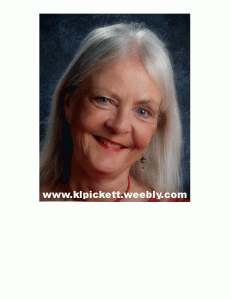
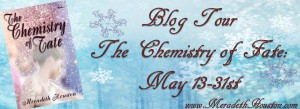
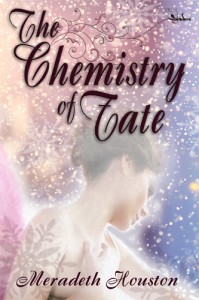

 As is tradition, Terra learns on the Saturday past her twelfth birthday that she is a Natures Spirit. It is her legacy to serve in the peaceful underground city of Concord. Learning she is named in a prophecy and being threatened by the leader of the death tribe…that part breaks tradition.
As is tradition, Terra learns on the Saturday past her twelfth birthday that she is a Natures Spirit. It is her legacy to serve in the peaceful underground city of Concord. Learning she is named in a prophecy and being threatened by the leader of the death tribe…that part breaks tradition. “Technology’s great when it works.”
“Technology’s great when it works.”
